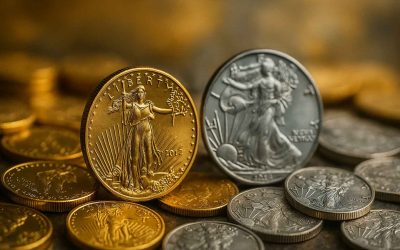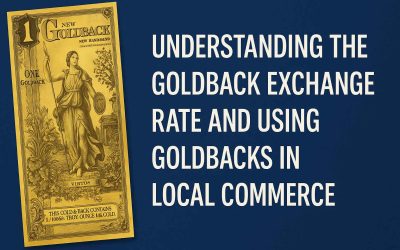Inflation is one of the most important—and most misunderstood—concepts in economics. It touches nearly every aspect of our daily lives, from the cost of groceries to the value of our savings. Yet despite its widespread impact, few people fully understand what inflation is, how it works, and why it matters. This article will provide a deep dive into the nature of inflation, exploring its causes, effects, and why a sound understanding of inflation is essential for making informed financial decisions.
Defining Inflation
Inflation is the rate at which the general level of prices for goods and services rises over time, leading to a decrease in the purchasing power of money. In other words, when inflation occurs, each unit of currency buys fewer goods and services than before.
For example, if the annual inflation rate is 5%, a product that costs $100 this year will cost $105 next year—assuming no other factors affect the price.
It’s important to understand that inflation doesn’t just apply to one product or service; it’s a broad measure that reflects price increases across an entire economy.
The Two Faces of Inflation: Creeping and Galloping
Economists often categorize inflation into three main types:
- Creeping Inflation (Mild Inflation)
This occurs when prices rise slowly—typically under 3% per year. It’s considered a normal part of a growing economy and is usually not a cause for concern. - Galloping Inflation (High Inflation)
This is a much more rapid increase in prices—often in double-digit percentages annually. It can lead to serious economic instability as wages fail to keep pace with rising costs. - Hyperinflation
An extremely high and typically accelerating rate of inflation, often exceeding 50% per month. This can devastate an economy, wiping out savings and leading to the collapse of currencies, as seen historically in Zimbabwe (2008) and Weimar Germany (1920s).
The Root Causes of Inflation
Inflation is typically driven by one of two primary forces—demand-pull or cost-push inflation:
1. Demand-Pull Inflation
This occurs when consumer demand for goods and services outpaces supply. With more money chasing fewer goods, prices naturally rise. This often happens in booming economies with low unemployment and increasing consumer spending.
2. Cost-Push Inflation
This arises when the costs of production increase—whether through higher wages, energy prices, or material costs—causing producers to pass those increases onto consumers.
3. Monetary Inflation
Another major driver is an increase in the money supply. When governments or central banks print more money without a corresponding increase in goods and services, the value of each unit of currency declines. This is known as monetary inflation, and it underpins the Austrian School of Economics’ definition of inflation: an expansion of the money supply.
Inflation and Currency: The Danger of Fiat Systems
Modern currencies like the U.S. dollar are fiat currencies, meaning they are not backed by a physical commodity like gold or silver. Instead, their value relies on trust in the issuing government.
Without a tangible backing or a fixed supply, governments and central banks have wide leeway to create new money—often in the form of stimulus spending or monetary easing. While this can stimulate short-term economic growth, it risks long-term inflation and devaluation.
Consider this: The U.S. dollar has lost over 95% of its purchasing power since the Federal Reserve was created in 1913. What cost $1 then would cost more than $30 today—not because products became more valuable, but because the dollar became less so.
The Consequences of Inflation
Inflation affects different groups in different ways:
- Savers lose: Inflation erodes the value of money saved in bank accounts, CDs, or cash. If inflation is 5% and your savings earn 1%, you’re effectively losing purchasing power.
- Borrowers win: Those with fixed-rate loans (like mortgages) benefit because they repay their debt with money that’s worth less than when they borrowed it.
- Fixed-income earners suffer: Pensioners and others on fixed incomes can see their standard of living decline if their benefits don’t keep pace with rising costs.
- Businesses may struggle: Rising input costs can squeeze profit margins, and unpredictable inflation makes long-term planning difficult.
Measuring Inflation: CPI, PPI, and Beyond
Several key indicators are used to track inflation:
- CPI (Consumer Price Index): Tracks the price changes of a basket of goods and services commonly consumed by households. It’s the most widely cited measure.
- PPI (Producer Price Index): Measures the average change in selling prices received by domestic producers, serving as a leading indicator of future consumer inflation.
- Core Inflation: Excludes volatile food and energy prices to reveal underlying trends.
Critics argue that official inflation statistics understate real-world inflation, especially when methodologies are adjusted for “hedonic” improvements (like better-quality TVs costing the same or less than older models).
How to Hedge Against Inflation
Understanding inflation is crucial for protecting your wealth. Here are some common strategies:
- Precious Metals
Gold and silver have historically served as hedges against inflation due to their intrinsic value and limited supply. - Real Assets
Real estate, farmland, and commodities often retain value or even appreciate during inflationary periods. - Inflation-Protected Securities
Instruments like Treasury Inflation-Protected Securities (TIPS) adjust their principal value with inflation. - Dividend-Paying Stocks
Companies that can pass rising costs to consumers often maintain profitability and continue to pay dividends, even during inflation. - Cryptocurrencies
Some argue that Bitcoin and similar assets, due to limited supply and decentralized nature, may serve as digital hedges against fiat inflation.
Inflation Is a Silent Thief
Inflation is not just a line item in an economics textbook—it’s a daily force that impacts your purchasing power, savings, and financial future. While mild inflation may be a sign of a growing economy, unchecked inflation acts as a silent thief, eroding wealth and distorting economic decisions.
Understanding the mechanisms behind inflation empowers individuals to make better financial choices, safeguard their assets, and advocate for sound monetary policies. In a world where money printing is increasingly the norm, embracing alternatives like gold, silver, or other finite-value stores may offer a path to long-term financial stability.
Disclaimer: Royal Leo Holdings, LLC and GoldbackInfo.com are not registered financial advisors. All content on this site is provided for informational and educational purposes only and represents our own opinions—not financial advice. You should consult a qualified professional before making any investment decisions.








0 Comments